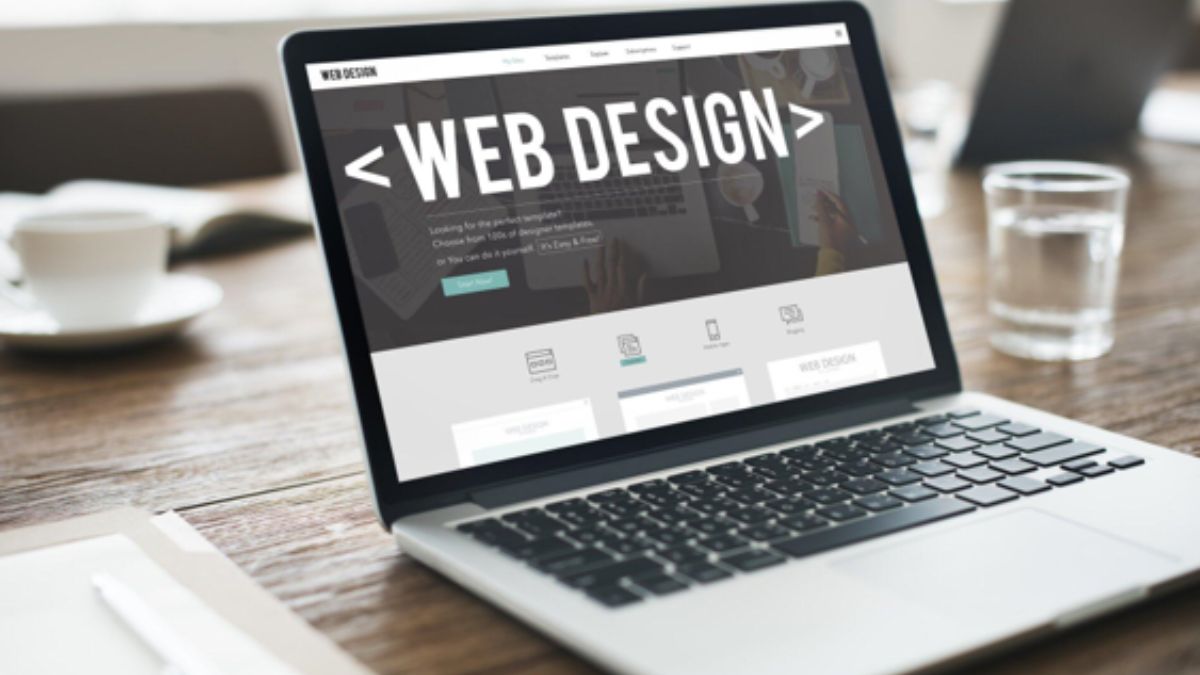WEBSITES
Step-by-Step: Integrating ARIA into Your React Projects

In today’s world, the biggest challenge that developers come across is creating accessible and interactive web applications. It is crucial to ensure that the components are not only visually appealing but also fully accessible to all users. And it requires a deep understanding of multiple standards and best practices.
Integrating ARIA into your React projects is one of the simplest ways to ensure the accessibility and interactiveness of web applications. When you hire React developers having a strong understanding of ARIA to help you reach a wider audience and fulfill accessibility obligations.
In this blog post, we’ll explore React ARIA and its step-by-step guide to integrate it into your React projects.
What is React ARIA?
React ARIA (Accessible Rich Internet Applications) is a powerful library that leverages the power of React hooks to seamlessly integrate UI components and make them accessible to developers. It offers a wide range of hooks and behaviors that simplify the complexities of WAI-ARIA specifications – ensuring that components developers build are accessible to users with disabilities.
Moreover, it also aims to close the gap between the demand for complex components and the requirement for accessibility while delivering an effective solution.
Key Features of React ARIA
Here are the salient key features of React ARIA:
-
Accessibility
Accessibility is one of the foremost features of React ARIA. It includes adherence to ARIA attributes, focus management, keyboard navigation, and support for assistive technologies such as screen readers.
-
Behavior Hooks
React ARIA’s library provides a wide range of behavior hooks that encompass the logic for common UI patterns like toggle buttons, menus, and dialogs. These hooks also manage focus, keyboard interactions, and other accessibility features that help the developers create complex components easily. React Aria offers a variety of hooks and components, such as useButton, useCheckbox, useSlider, useFocusRing, useCombobox, and many others.
-
Extensive Customizability
React ARIA offers unstyled components which means developers have full control for customizability. The unstyled components also allow customizations with pre-existing design systems.
-
Focus Management
React ARIA also includes hooks for managing focus within components. It also ensures that users can navigate the UI using a keyboard or other input methods.
Architecture of React ARIA
React ARIA is primarily designed to allow resuing component behavior between design systems. However, each component is divided into three parts: behavior, state, and the rendered component. Let’s have a bird eye view of it’s architecture:
-
State Hook
A State Hook is used to manage the internal state of a component, specifically in relation to accessibility features. These hooks help in handling complex state management for components and ensure they work seamlessly and consistently when it comes to user interactions.
For instance, if a developer is creating a toggle button, a State Hook can manage whether the button is currently “on” or “off.”
-
Behavior Hook
A Behavior Hook encompasses the logic and interactions that are necessary for implementing common user interface (UI) patterns while ensuring accessibility.
These hooks provide pre-defined behaviors that manage state, keyboard interactions, focus management, and other accessibility features according to WAI-ARIA guidelines.
With this hook, developers can easily incorporate complex accessibility behaviors into the components without manually writing and managing complex logic,
-
Component
The component integrates the state and behavior hooks provided by the library and it is also referred to as high-level abstraction. These components are comprised of dialogue, a menu, and a button.
Steps for Integrating ARIA into a React Project
Step 1: Understanding the Role of ARIA
ARIA is a set of attributes that define ways to make web content and web applications more accessible. It doesn’t change the functionality of an application but rather improves the communication between the application and assistive technologies.
The first step in integrating ARIA is understanding its various roles, states, and properties. There are different ARIA attributes that one should know like role, aria-live, aria-label, aria-checked, and more.
Step 2: Identifying Components that Need ARIA
In a React application, every component does not require ARIA attributions. It is important to identify which specific parts need ARIA integration.
It is advisable to focus more on custom components like buttons, menus, forms, and models.
Step 3: Applying ARIA Roles
After the identification of the components that need ARIA, the next step is to apply ARIA roles. Roles explain the type of element dealing with (e.g., button, checkbox, dialog).
Step 4: Managing ARIA Properties
ARIA properties allow to provide additional information about the managing components. For instance, if there is a toggle button, one can use the ARIA-pressed attribute to indicate its current state.
Conclusion
React ARIA is a powerful tool for extensive customization of React components and the development of accessibility. By following the above-mentioned steps, one can ensure that the application not only meets accessibility standards but also provides a better user experience.
If you’re looking to create accessible web applications, hire React developers having a strong understanding of ARIA.
WEBSITES
Why Businesses Choose Freelance Web Developers for Flexibility

Did you know that the global web development market is projected to touch $141.49 billion by 2033? This growth reflects the rising demand for adaptable, skilled web developers.
In today’s fast-paced digital world, businesses often face tight deadlines and changing project needs. This pushes many to look for alternatives to traditional hiring. Freelance web developers have become a popular choice.
In this article, we explore why more companies are turning to freelance talent. Continue reading to learn more.
Cost-Effectiveness
One of the main benefits of hiring freelance web developers is saving money. Freelancers often charge less than full-time employees. This makes them a smart choice for budget-conscious companies.
Businesses don’t have to cover extra costs. They can skip expenses like healthcare, office space, and equipment. This reduces the overall cost of development.
Startups and small businesses benefit the most. They can use their limited funds more wisely. Freelancers help them get quality work without overspending.
Access to Diverse Skill Sets
Freelancers bring a wide range of skills to the table. They often specialize in different technologies and tools. This gives businesses more options when choosing talent.
Some focus on front-end development or design. Others are experts in back-end systems or databases. Each freelancer offers unique strengths.
Companies can quickly find the right skills for each project. They don’t need to go through long hiring steps. This saves time and ensures better results.
Increased Flexibility
Freelance web developers offer great flexibility. They can adjust their work hours to fit project needs. This helps businesses stay on schedule.
Deadlines and project scopes often change. Freelancers can quickly adapt to these changes. Their flexibility supports fast decision-making.
Businesses can respond faster to market shifts. They don’t have to wait for internal approvals or staffing changes. This gives them a strong competitive edge.
Faster Project Turnaround
Choosing to hire a web developer helps companies complete tasks quickly. They often work on specific projects with clear deadlines. This focus leads to faster results.
Because freelancers handle fewer distractions, they stay on track. Their goal is to meet or beat deadlines. This makes them highly efficient.
Faster turnaround means quicker launches. Businesses can release products ahead of competitors. This advantage helps them lead in the market.
New Perspectives
Freelancers work with many clients from different industries. This gives them a broad range of experiences. They bring fresh ideas to every project.
Their outside view can spark creativity. In-house teams may miss certain solutions. Freelancers offer new ways to solve problems.
Businesses gain from these unique insights. New perspectives can improve project quality. They also help teams think differently and grow.
Scalability
Freelancers make it easy to scale development teams. Companies can add more help when demand grows. This keeps projects moving without delay.
When work slows down, teams can shrink quickly. There’s no need for long-term commitments. This helps manage costs more effectively.
Scalability is key in fast-changing industries. Businesses can stay flexible and efficient. Freelancers support this smooth adjustment.
Flexibility in Work Arrangements
Freelancers usually work from remote locations. This allows companies to hire talent worldwide. Location is no longer a barrier.
With more choices, businesses can find better matches. They are not limited to local candidates. This expands the talent pool greatly.
Hiring remotely also saves time and resources. There’s no need for relocation or in-office setups. It makes finding the right fit easier and faster.
Enhanced Collaboration Tools
Today’s tools make working with freelancers simple. Apps like Slack, Trello, and Asana keep communication clear. They help everyone stay on the same page.
These tools support remote teamwork. Tasks, deadlines, and updates are easy to track. This keeps projects organized and on time.
Better collaboration leads to better results. Everyone knows their role, and progress is visible. This builds trust and accountability.
No Long-Term Commitment
Many companies avoid long-term hiring when budgets are tight. Freelancers offer a flexible solution. They can be hired for short-term or project-based work.
This setup lowers the risk for businesses. There’s no need for permanent contracts. Companies pay only for the work they need.
It also gives time to test the freelancer’s skills. If the results are good, future work is easy to arrange. This makes hiring safer and smarter.
Quick Onboarding
Hiring full-time staff can take a lot of time. Freelancers are usually ready to start right away. Their skills are already proven and easy to match with tasks.
This saves valuable time for businesses. Projects can begin without long delays. Work starts as soon as the freelancer is brought on.
Faster onboarding boosts project momentum. Teams see progress more quickly. This helps meet goals on time and with less stress.
Benefit from Industry Trends
Freelance web developers stay updated with new trends. They follow the latest tools and technologies. This helps them stay competitive in their field.
When businesses hire freelancers, they gain fresh insights. Projects reflect modern design and development practices. This keeps the work relevant and engaging.
Staying current gives companies an edge. Their websites and apps feel up-to-date. This attracts users and builds trust.
Time Zone Advantages
Freelancers across the globe can work while you sleep. This creates around-the-clock progress. Teams wake up to completed tasks.
This benefit shortens delivery timelines. There’s less downtime between feedback and action. It boosts productivity across time zones.
Global teams create a continuous workflow. Time is used more efficiently. Projects move forward even after office hours.
Trial Before Long-Term Hire
Freelancers offer a low-risk way to test talent. You can evaluate their skills on a project first. This helps make better hiring decisions.
If the work is great, you can extend the relationship. If not, you can move on easily. There’s no long-term contract pressure.
This try-before-you-commit model works well. It protects your budget and ensures quality. Many businesses value this flexibility.
The Freelance Advantage
Hiring a freelance web developer can boost a company’s agility. It helps businesses stay competitive in a fast digital world. Freelancers bring speed, skill, and fresh ideas.
The benefits go beyond cost savings. Companies gain access to a wide talent pool and flexible work options. This approach helps them grow and adapt with ease.
Searching for more informative articles like this? Then please keep browsing our blog now!
WEBSITES
Choosing the Right Professional Web Services for Your Business Needs

In today’s digital age, establishing a robust online presence is crucial for any business. Choosing the right professional web services can make the difference between slipping through the cracks or becoming a recognized name in your industry.
With the vast options available, how can you determine which services align with your specific goals? Keep on reading to learn more.
Understanding Your Business Needs
Before diving into the multitude of web services available, identify your unique business needs. Consider the following:
Purpose of Your Website
Think about what you want your website to do. Are you selling products, showcasing your work, or sharing useful information? Knowing your goal will help you choose the right design and features.
Target Audience
Consider who will visit your site the most. Are they customers, clients, or readers? Understanding their needs will help you pick the right layout, content, and web services.
Budget
Decide how much you can spend on your website. Prices can range from affordable to expensive, depending on features and customization. Setting a budget early will help you make smart choices.
What Professional Web Services Are Available?
Once you have a clear understanding of your needs, you can explore the various professional web services that might be suitable for you. The primary services typically include:
Web Development
This involves the technical side of creating and maintaining your website. It includes everything from coding to implementing servers.
Web Design
A well-designed website captures attention and enhances user experience. Design services focus on layout, color schemes, and overall visual appeal.
Web Optimization
After developing and designing, optimization ensures your site loads quickly and is search-engine friendly. This is vital in retaining visitors.
Choosing the Right Service Provider
Now that you’re aware of what services are available, how do you choose the right provider? Here are key factors to consider:
Portfolio
Review the company’s previous work. A diverse portfolio showcases their expertise and flexibility in handling various projects.
Testimonials and Reviews
Look for customer feedback. Positive reviews indicate reliability, while constructive criticism can provide insights into their operation.
Specialization
Some companies specialize in specific areas, like e-commerce or responsive design. Choose a provider whose strengths align with your needs.
Communication
Effective communication is pivotal. Ensure they are responsive and willing to collaborate during the project’s various phases.
Investing in Your Business’s Future
Choosing the right professional web services is more than just a technical decision; it’s an investment in your business’s future. Ensure you partner with a company that understands your goals and can tailor their services to meet them effectively.
If you are looking for professional help, click for website development services. Make sure to do your research to learn about the services offered and the quality of services you can get.
Moving Forward
In the end, your website is often the first interaction potential customers have with your brand. Therefore, the importance of selecting the right professional web services cannot be overstated.
Take the time to evaluate your options, assess your specific needs, and choose wisely. Remember, the right website can serve as a gateway to achieving your business objectives.
For more topics similar to this one, check out the rest of our blog!
WEBSITES
Why Web Design Is Critical for Business Growth in 2024

In the fast-paced digital landscape of 2024, a well-designed website is no longer just an asset—it’s a necessity. As the first interaction many customers have with your brand, your website can determine whether a visitor stays to explore or leaves for a competitor. Beyond aesthetics, web design plays a crucial role in functionality, user experience (UX), and conversions, making it a cornerstone of business growth.
JetRank, a leading digital marketing agency, emphasizes the importance of aligning web design with business goals. “A website isn’t just a digital storefront; it’s a business growth engine,” explains Roger Avila, founder of JetRank. “By focusing on user experience and functionality, businesses can maximize their online potential.”
The Role of Web Design in Business Growth
A website is more than a collection of pages—it’s a strategic tool that drives revenue, builds trust, and creates brand recognition. Here’s how effective web design contributes to business growth:
1. Building Trust and Credibility
Your website is often the first impression customers have of your business. A professional, well-structured site builds trust and establishes credibility, encouraging users to stay and explore. Conversely, a poorly designed site can deter potential customers.
2. Enhancing User Experience (UX)
Web design directly impacts how users interact with your site. Simple navigation, fast load times, and mobile responsiveness create a seamless experience that keeps visitors engaged.
3. Driving Conversions
A strategically designed website guides users toward specific actions, such as making a purchase, booking a service, or filling out a contact form. Thoughtful design elements like clear CTAs (call-to-actions) and intuitive layouts can significantly boost conversions.
4. Improving SEO Performance
Web design and SEO are closely intertwined. Search engines favor websites that are mobile-friendly, fast-loading, and easy to navigate. These factors directly influence rankings and organic traffic.
Example: JetRank combines web design with SEO strategies to ensure clients’ sites perform well in search results.
Key Elements of Effective Web Design
To drive business growth, your website should incorporate the following essential design elements:
1. Responsive Design
With over half of internet traffic coming from mobile devices, having a responsive design is non-negotiable. Responsive websites adjust seamlessly to different screen sizes, providing a consistent experience across devices.
2. Fast Load Times
Slow websites frustrate users and increase bounce rates. Optimize images, compress files, and use a reliable hosting provider to ensure your site loads quickly.
3. Intuitive Navigation
Clear menus and logical navigation paths make it easy for users to find the information they need. Intuitive navigation enhances the overall user experience and encourages visitors to explore more pages.
4. Compelling Visuals and Branding
High-quality images, videos, and consistent branding elements create a visually appealing site that reinforces your brand identity.
5. Strategic CTAs
Every page should have a clear purpose, and well-placed CTAs guide users toward that goal. Whether it’s signing up for a newsletter or purchasing a product, CTAs should be visible and action-oriented.
The Business Impact of Poor Web Design
A poorly designed website doesn’t just fail to attract customers—it actively drives them away. Issues like slow load times, confusing navigation, and outdated visuals can harm your brand’s reputation and cost you valuable leads.
Roger Avila highlights, “A website is a reflection of your brand. If it’s outdated or difficult to use, customers may question your credibility and professionalism.”
Why Businesses Need Professional Web Design Services
Partnering with a professional web agency ensures your site is optimized for growth. Here’s why businesses should invest in expert web design:
1. Customized Solutions
Professional designers tailor websites to meet your specific needs, ensuring functionality and aesthetics align with your business goals.
2. SEO Integration
Web design services from JetRank prioritize SEO best practices, ensuring your site ranks higher and attracts organic traffic.
3. Future-Proofing
Web design trends evolve rapidly. Professional agencies stay updated with the latest technologies and techniques, ensuring your site remains relevant.
4. Save Time and Resources
A professional agency streamlines the design process, allowing you to focus on your core business activities.
Success Story: JetRank’s Web Design Excellence
JetRank has helped countless businesses transform their online presence with customized web design solutions. From small startups to established enterprises, JetRank’s expertise ensures every client’s website drives measurable results.
“We don’t just build websites; we build growth platforms,” Roger shares. “Our focus is on creating sites that not only look great but also perform exceptionally.”
Take Your Website to the Next Level
In 2024, a website is more than a digital asset—it’s a powerful growth tool. Investing in professional web design ensures your site meets the demands of modern users while driving traffic, engagement, and conversions.
Discover how JetRank’s web design services can elevate your business. With a focus on functionality, aesthetics, and performance, JetRank ensures your website becomes a critical driver of growth and success.
-

 HEALTH2 years ago
HEALTH2 years agoIntegrating Semaglutide into Your Weight Loss Plan: A Practical Guide
-

 HOME IMPROVEMENT2 years ago
HOME IMPROVEMENT2 years agoHow to Choose the Perfect Neutral Area Rug for Every Room
-

 LAW1 year ago
LAW1 year agoTeenage Drivers and Car Accidents in California: Risks and Parental Liability
-

 CONSTRUCTION1 year ago
CONSTRUCTION1 year agoConstruction Site Safety Regulations in New York and Your Rights as a Worker
-

 LAW1 year ago
LAW1 year agoPost-Divorce Considerations in California: Modifications and Long-Term Planning
-

 HOME2 years ago
HOME2 years agoSandra Orlow: The Teen Model Who Captivated the Internet
-

 FINANCE1 year ago
FINANCE1 year agoDigital Asset Management in Florida Estate Planning
-

 LAW1 year ago
LAW1 year agoKentucky’s School Football: Concussions, Injuries, and Legal Options
